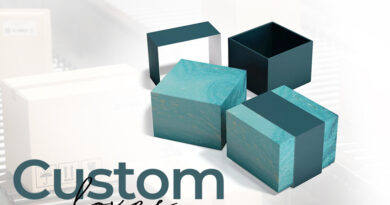How 3d Printing and Reverse Engineering Improve Industrial Production
With the gradual advancement in engineering over the years, we have experienced significant benefits in many aspects. Similarly, reverse engineering and 3D printing together have incredible benefits if used correctly.
Reverse engineering, also termed back engineering, is a method that is just opposite to the traditional production methods. In conventional techniques, typically, a design is created which depicts the details of the construction. On the contrary, the process starts with measuring the size and shape of the object, which is possible with advanced technologies like 3D scanning and 3D printing.
This technique focuses on understanding the structure initially and gathering information of the previous manufacturing processes, which eventually helps find better solutions.
Various manufacturing industries use reverse engineering and 3D printing technologies for their production purposes and have witnessed great benefits. On this note, let’s check out how these two processes can significantly ease the production process in real-time.
How does 3D printing and Reverse Engineering improve your production?
3D printing and Reverse Engineering has excellent benefits in the overall production and manufacturing industry. Be it automotive, construction, or aerospace, this advanced combination is bringing a paradigm shift in the entire manufacturing paradigm shift:
Reduced expenses
Material and production costs are indeed heavy expenditure regardless of industry and company size. 3D printing and reverse engineering combined can help in lowering down the expenses to a significant extent. The jigs and fixtures are primary examples that cost a substantial cost to the manufacturer when outsourced. 3D printing in-house jigs and futures can immensely save up resources.
Likewise, many different productions require high investment in production tooling, such as injection molding and others, which are the conventional tooling for manufacturing purposes and are highly expensive. Investing in such expensive tools is indeed not a wise move during lower production orders. Thus, these technologies can help during the lower volume production instances. Since it is not feasible to invest a high amount for lower volume production, it would eventually incur heavy expenditure to the company.
All such scenarios, when considered carefully, proven that 3d printing and reverse engineering can save up plenty of expenses for the manufacturer, which can later be reinvested into other necessary aspects of production.
Quicker processes
Production development, in general, is a very lengthy and time taking process. With heaps of traditional systems and mechanisms, production is prolonged, resulting in inefficient and late delivery. For overcoming this delay, 3D printed prototypes are allowing engineers to formulate their designs into reality quickly.
Additive manufacturing offers rapid prototyping with the use of CAD data which is faster and convenient. The prototyping process also has excellent agility since the iteration process with these technologies is more responsive. Thus, businesses can create the changes faster, followed by the reverse engineering process for understanding the structure and making the prototype.
Also, faster product iterations mean a quicker switch to the product development phase as the product flaws and discrepancies are rectified at an early design stage. The entire process, which was a hassle previously and took days and days to complete, can be completed in a much shorter time.
With the implementation of 3D technologies and reverse engineering, manufacturers are automating several time-consuming tasks. Also, this process directly reduces the errors and mistakes in the production, which directly impacts the delivery time and creates a better rapport with the business in the long run.
Renewable
Material wastage is a common challenge in any manufacturing industry. However, it is possible to reduce it by leveraging additive manufacturing and reverse engineering.
The addictive nature of 3D technologies wherein the 3D modelling is mainly carried out using plastic spools is an excellent method of minimizing the overall material wastage. Several biodegradable 3d printing materials like PLA are available in the market that helps companies protect the environment.
Compared to traditional subtractive methods, 3d printing technology is much more environmentally friendly, and lets engineers produce more eco-friendly products.
Higher efficiency
Material development is quite an effort in the manufacturing industry. With manual processes, the efficiency and productivity over time reduce significantly, resulting in poor product deliveries.
However, with the 3d print services, it is easy to upgrade the quality of the materials. Compared to conventional processes, engineers can produce more complex mechanical parts that are highly durable, robust, and performance-driven.
With a continuously increasing demand for these services, several companies are now offering professional online 3D printing services in Perth and other cities.
There are several 3D printing technologies available, including SLA, DLP, SLM, and more which creates the best quality parts at cheaper rates.
When 3d printing technology works together with reverse engineering, it enhances the product’s efficiency. Reverse engineering helps understand the mechanism of the structure and let manufacturers fix the flaws at the initial stage.
Mass customization
Along with quicker and more efficient parts, this combination helps manufacturers scale their mass customization production batch with ease. Be it a small batch of intricate design objects or bulk manufacturing, RE and additive manufacturing bring great advantage for the manufacturing and production industry.
Industries including automotive, customer products, fashion, and more are leveraging these technologies to ease their production. 3D printing services help in personalizing products seamlessly without hampering the quality and speed of the production rate and with no additional cost.
Earlier, companies needed to spend substantial capital and time to personalize the products as per customer demands that eventually increase the product’s pricing. On the other hand, as 3d printing is an additive process and requires no tooling, customization has become affordable.
Final Thoughts
Reverse Engineering and 3d printing technologies have great potential across industries. Both these techniques are a boon for the production industry and can massively help improve the traditional processes. In future, we will see more advancements of this combination as the availability is growing significantly.
Considering a sudden growth in the demand for efficient manufacturing, several companies offer professional 3d printing in Melbourne, Brisbane, and many other cities. As small businesses are also adopting these technologies, the future of the industrial domain is disruptive.




